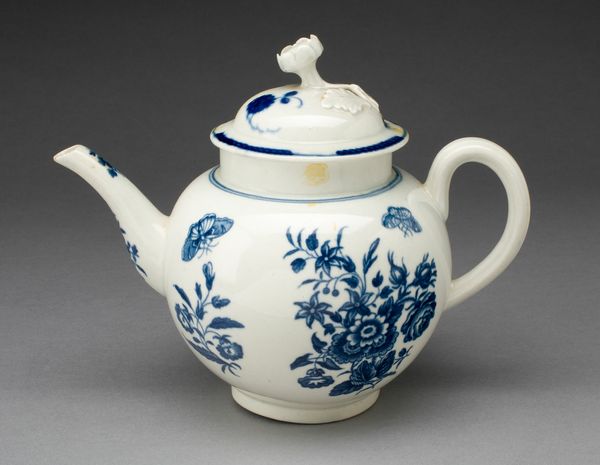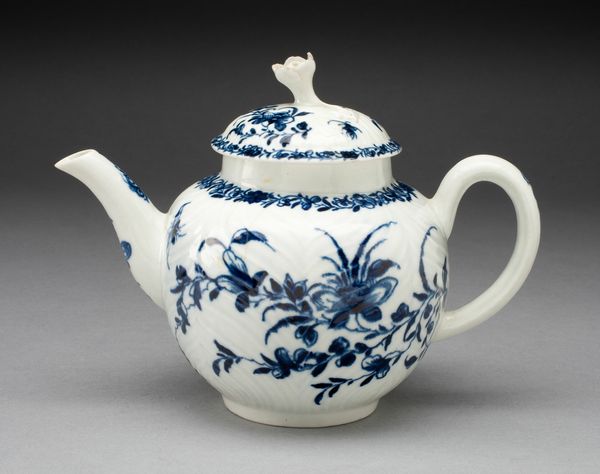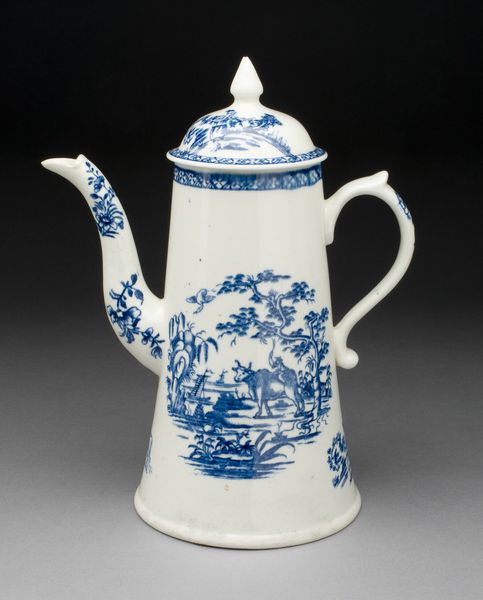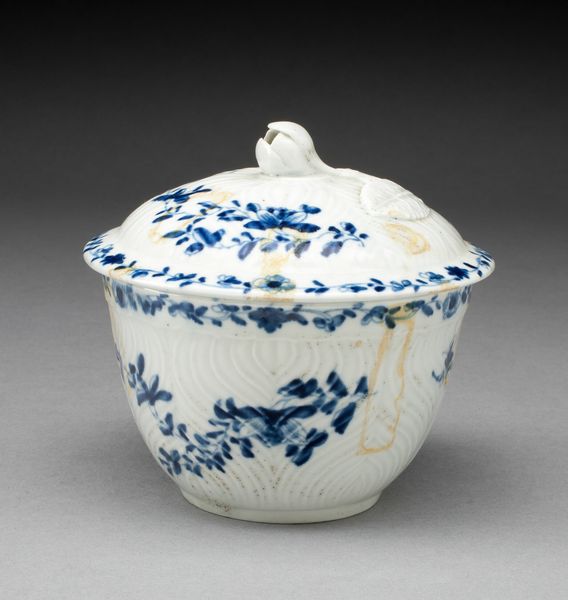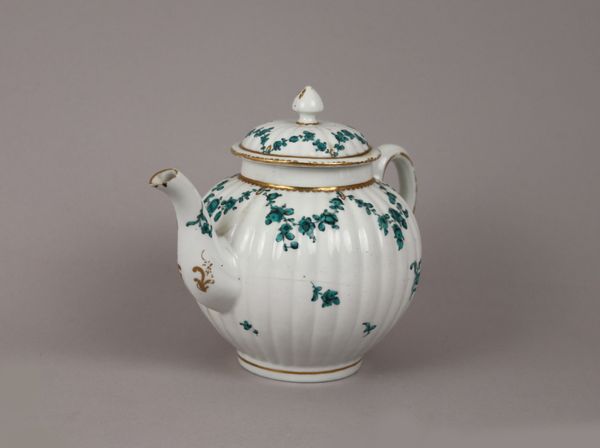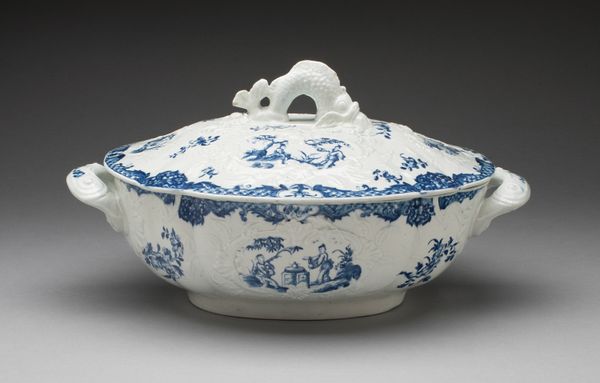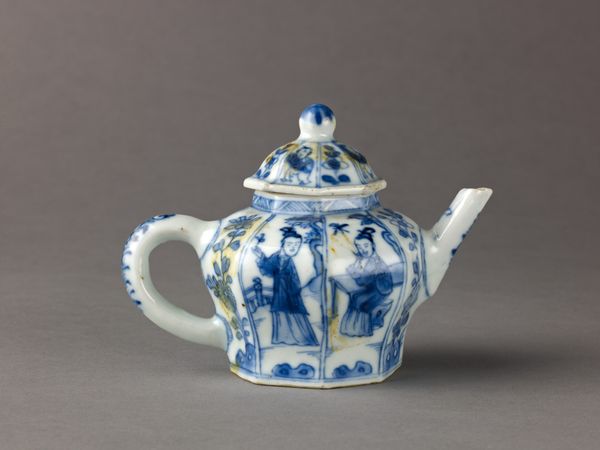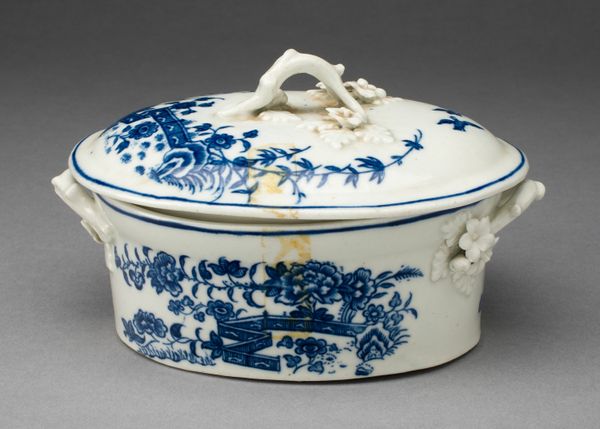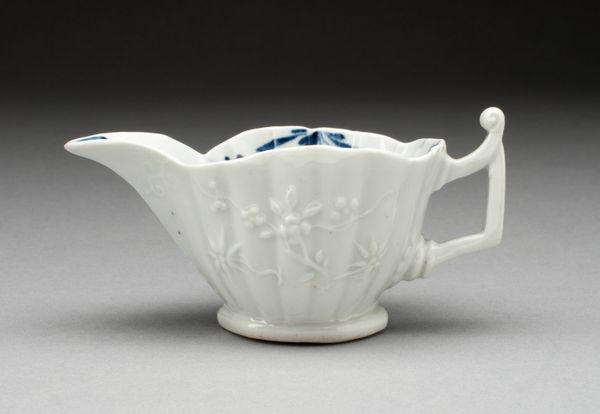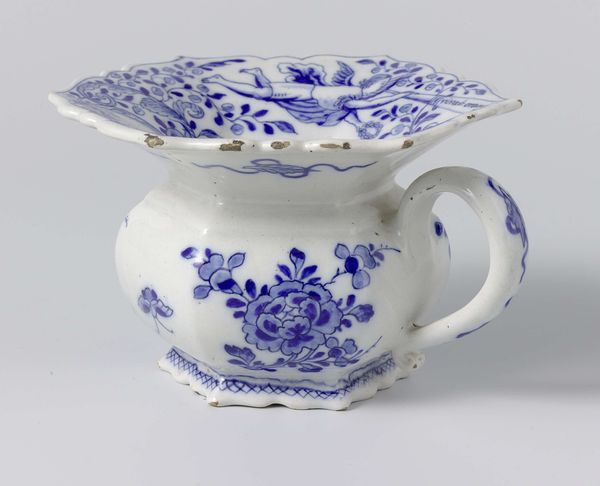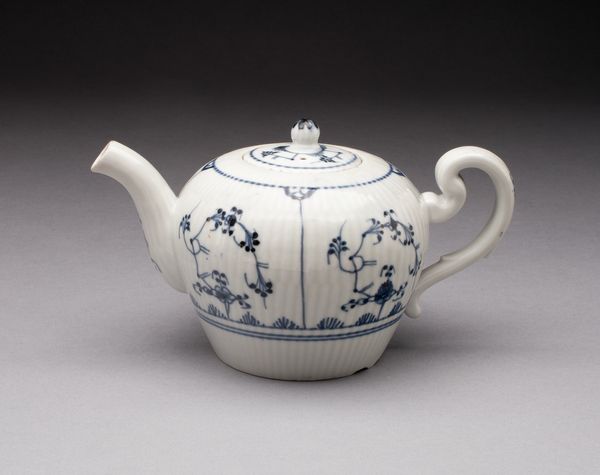
ceramic, porcelain
#
ceramic
#
porcelain
#
ceramic
#
decorative-art
#
rococo
Dimensions: Tureen: 21 × 19.4 × 30.5 cm (8 1/4 × 7 5/8 × 12 in.); Stand: H. 5.7 cm (1 1/4 in.); diam. 27.9 cm (11 in.)
Copyright: Public Domain
Curator: What we're looking at is a Tureen and Stand, crafted around 1770 by the Worcester Royal Porcelain Company. It resides here at the Art Institute of Chicago. What do you make of it at first glance? Editor: The colour palette alone is enough to trigger a feeling of serenity. The muted blues against the crisp white is soothing, and creates an instant mood of gentility, even before noticing its floral decorations. Curator: Precisely. Those floral motifs, executed in cobalt oxide underglaze on the porcelain, aren't merely decorative; they're a symbolic echo of idealized nature. In that era, flowers represented notions of growth, beauty, and fragility of life itself, reflecting the era’s preoccupation with aesthetics and mortality. Editor: Yes, it makes me consider the social theatre of dining in the late 18th century. This piece wouldn't just be functional, it'd be a performative object. Imagine the light from candles glinting off the glaze in a grand dining room, and the stories this Tureen might have "heard" from aristocrats. It gives us insights into a certain society! Curator: Absolutely, it speaks to status. Porcelain was incredibly precious. Only elite tables could have such items on display. And its design, leaning into the Rococo with those organic, asymmetrical details and flourishes, broadcasts wealth and cultivated taste. Editor: But wasn’t porcelain production also becoming something of a nationalistic endeavour? Each European power wanting to outdo the others in its mastery? Curator: Indeed, the quest to replicate Chinese porcelain was a source of both national pride and economic ambition. The floral designs, while seemingly innocuous, link to the global flow of botanical knowledge that Europe used. Editor: It is a cultural artefact then, more than just tableware. Its floral designs are the perfect echo of its time period, don’t you think? Curator: Ultimately, the Tureen transcends simple functionality to act as a window into the intertwined cultural, economic, and aesthetic currents of the 18th century. Its porcelain whispers tales of empire, taste, and the transient beauty prized in a bygone world. Editor: So much symbolism layered onto what, to the modern eye, might just look like something for serving soup. It makes you wonder what objects today will carry such significance centuries from now!
Comments
No comments
Be the first to comment and join the conversation on the ultimate creative platform.

